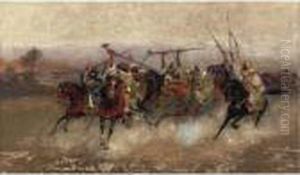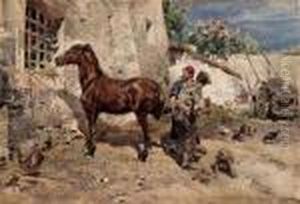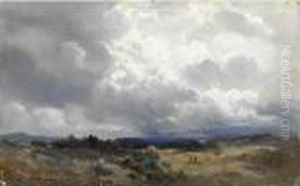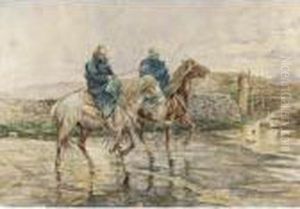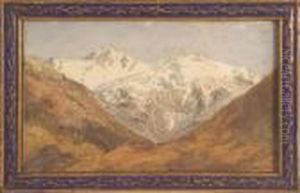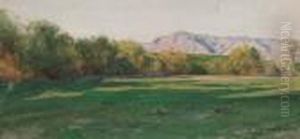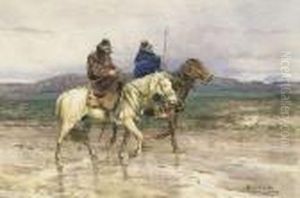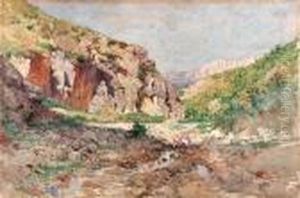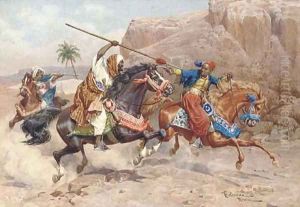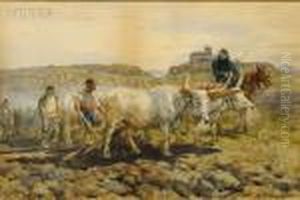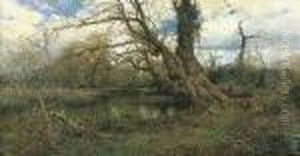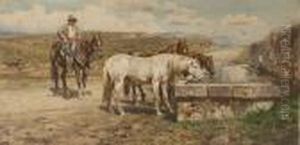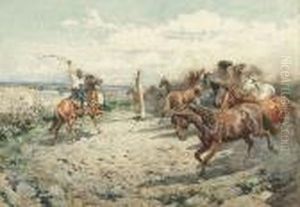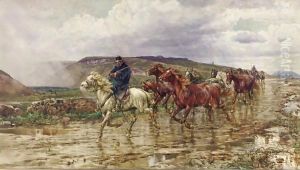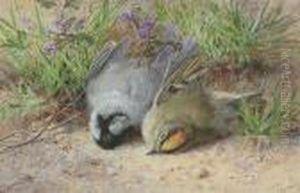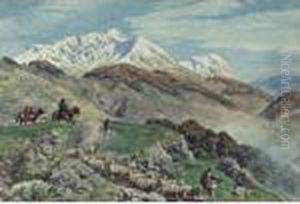Enrico Coleman Paintings
Enrico Coleman was an Italian painter, aquarellist, and engraver of British descent, known for his landscapes and genre scenes. He was born on June 21, 1846, in Rome, Italy, to Charles Coleman, an English artist who had settled in Italy, and his Italian wife, Fortunata Segadori. Enrico was part of a family of artists, as his half-brother, Francesco Coleman, was also a painter.
Enrico Coleman's upbringing in Rome provided him with a rich artistic environment. His father's connections to the art world and his own talent led him to study painting from a young age. Coleman's work is characterized by his interest in capturing the Italian countryside, particularly the Campagna Romana, the traditional agricultural area surrounding Rome. His landscapes often depicted the unspoiled nature and rural life of this region, and he was particularly adept at portraying the unique light and atmosphere of the Italian outdoors.
Coleman's style was influenced by the Macchiaioli group, a circle of Italian artists who focused on painting with quick brushstrokes and an emphasis on light and color, similar to the Impressionists. Despite this influence, Coleman maintained a distinctive approach, often incorporating detailed figures and animals into his scenes. He was particularly fond of painting horses and oxen, which he rendered with anatomical precision and a keen sense of their movement and character.
During his career, Coleman participated in various exhibitions, including those at the Società degli Amatori e Cultori di Belle Arti, and his works were well received by critics and collectors. His engravings and watercolors also contributed to his reputation, as they showcased his versatility and skill in different mediums.
Enrico Coleman remained active as an artist throughout his life, continuing to paint and exhibit his work until his death in Rome on February 14, 1911. His legacy endures through his contributions to the Italian art scene of the late 19th and early 20th centuries, and his paintings are still appreciated for their beauty and historical value, capturing a bygone era of Italian rural life.



